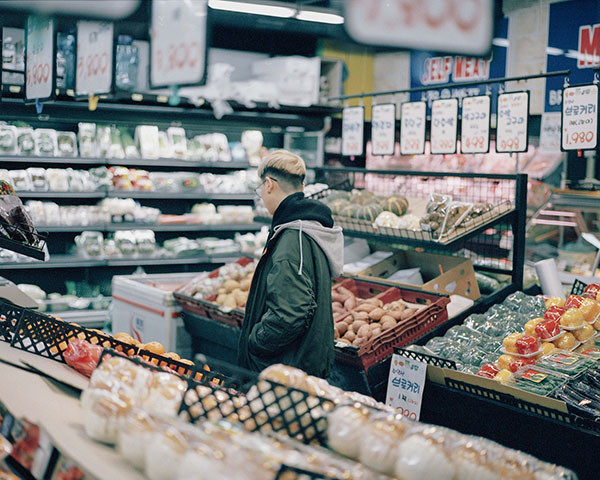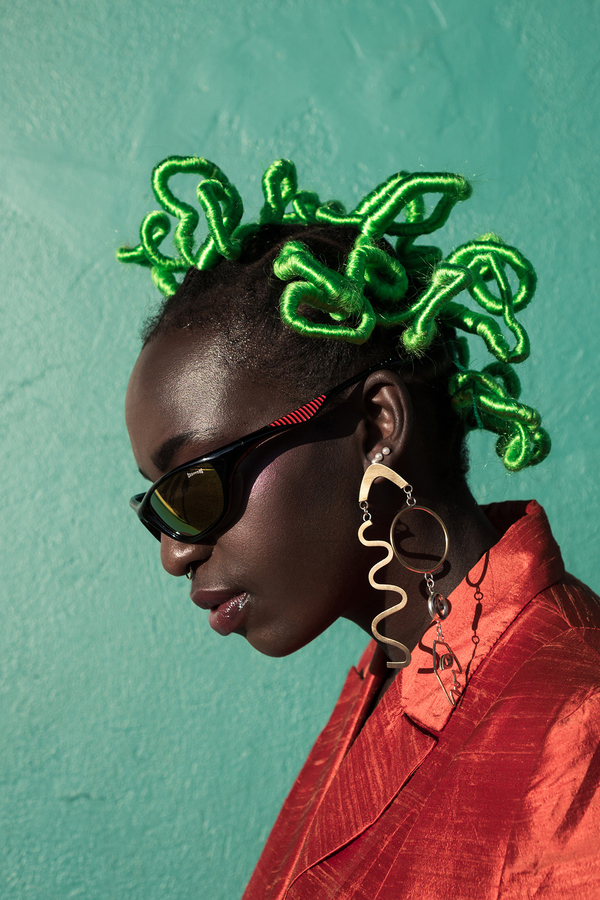3 Photo Editors On Why You Should Enter the Aperture Summer Open

Argus Paul Estabrook, Student Protesters March, Seoul, South Korea, 2017, from the series Losing Face
2017 Summer Open Artist
Aperture: Could you describe your point of view as an artist, editor, or educator?
Matthew Leifheit: I edit MATTE magazine and publish books and write and teach, in addition to being a photographer myself, and I think all these activities within photography have a symbiotic relationship—they both influence and are influenced by my practice as an artist. For my own photographs, I hope that I am expressing something visually that cannot be expressed in language, and would mostly like to leave it to other people to put words around my images.
But in terms of subject matter of my art or my publishing, I want to remain as open as possible. I am particularly interested in queer topics and supporting queer-identified artists, but this is not exclusively what I publish or photograph. I strive to have many points of view at once.
Chiara Bardelli Nonino: So much of our experience is filtered through words. A good photograph, at least to me, is something that resembles a wordless, silent epiphany. There’s a power to this immediacy and I think an editor must never forget the responsibility of choosing and showing one image or another.
Azu Nwagbogu: To have a point of view is always a little premature, in my opinion. I would rather consider my role as an enabler of the artistic voice and temperament. If I do have one point of view that I am adamant about, it is that an artist should be an artist and not a journalist or a priest or a moralist. It is important to encourage artists to trust the process of making and to leave it at that and not have to play the multiple roles that contemporary society bequeaths upon them.

Jon Henry, Untitled #1, Co-op City, New York, from the series Stranger Fruit
2017 Summer Open Artist
Aperture: What do you look for when viewing a body of work?
Leifheit: To quote one of my heroes, Vince Aletti, the best photographs have “something soulful.” It could be a landscape or a portrait or a cameraless darkroom abstraction, but my favorite pictures and bodies of work always have a mystical third element that could be called soul. It’s something indefinable. That said, there are certain things I do look for: that the photographer is in control of their references, that the photographs show an intensive commitment of thought if not time, that the project seems intensely and urgently personal rather than contrived to appear intelligent.
Nwagbogu: Authenticity, whatever that means and however that is defined within the ideas or scope of the work in view. Also, the spontaneous is important. I also want to see if the artist is close to achieving her aims. Without beauty, however you define that, all else is hopeless.
Bardelli Nonino: A clarity of vision, a sense of urgency, the ability to condense complexity and its intrinsic ambiguity in a self-contained space, be it a single image or a project.

Gowun Lee, I’m Here With You, 2017
2018 Summer Open Artist
Aperture: What advice could you give photographers who are considering submitting to the Summer Open?
Bardelli Nonino: Don’t be literal: the theme is as broad and as open to interpretation as it can be. Be a merciless editor: keep only the images that really are essential to tell your story. Allow yourself to be vulnerable.
Leifheit: Concentrate on making your work, not promoting it. The best place to put your energy is into the pictures—artists do not need business cards, promos, or websites if their work is good. It’s a lot easier to make something good and have people love it than it is to foist bad work onto an unwilling audience. Once the work is there, then opportunities like the Summer Open can be a way for more people to discover it.
Nwagbogu: You have much more to gain by applying than not applying. It really is that simple. To borrow an oft-used cliché, it really could be life changing, and I am confident that all the jurors will take a keen interest in each application. The diversity of roles and backgrounds of the jurors means that your work will get noticed regardless.

Matthew Shain, Post Monuments, New Orleans, (General P.G.T. Beauregard, erected 1913), 2017
2018 Summer Open Artist
Aperture: There are so many calls for entry out there. Why should people submit to the Aperture Summer Open?
Leifheit: Editors, curators, and collectors actually pay attention to who is chosen for this show because of Aperture’s reputation and long history of championing the work of new artists alongside established masters. The show is also a great way to grow your community of artists and put your work in dialogue with that of your contemporaries. I think I can speak for all the members of the show’s jury in saying that we will consider your submissions carefully and will be excited to discover new trends in photography from this very competitive pool of talented artists.
Bardelli Nonino: Aperture is one of the most respected voices in photography out there. If you have something to say, I can’t imagine a better platform to be heard.
Nwagbogu: It is a singular opportunity.

Bubblegum Club, Bee Diamondhead, 2017
2018 Summer Open Artist
The 2019 Aperture Summer Open is curated by Brendan Embser, managing editor, Aperture magazine; Matthew Leifheit, artist and editor of MATTE magazine; Chiara Bardelli Nonino, photo editor, Vogue Italia and L’Uomo Vogue; Azu Nwagbogu, director of African Artists’ Foundation and LagosPhoto; and Guadalupe Rosales, artist and founder of Veteranas & Rucas and Map Pointz.
Submit your work now through April 12, 2019.























